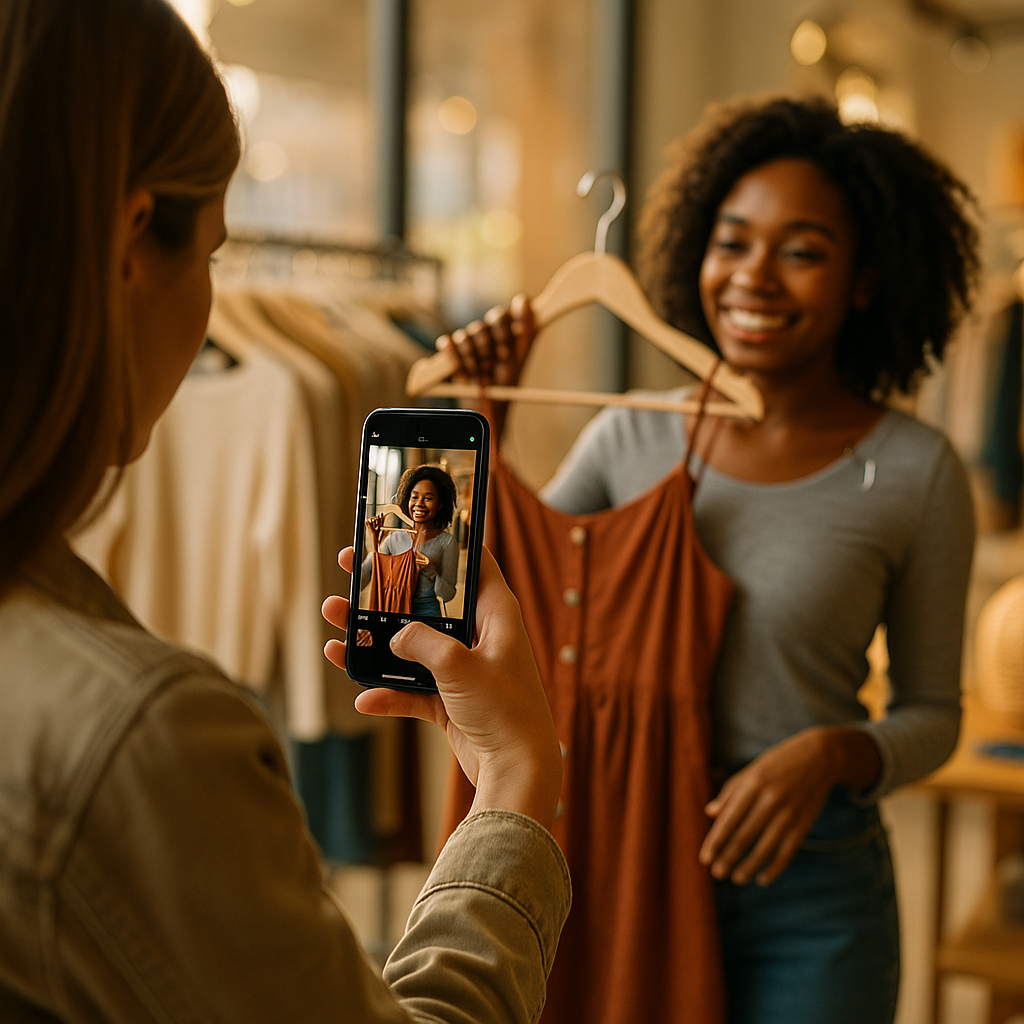In 2025, the retail landscape continues to evolve as brands compete for customer attention. This case study of a successful in-store retail activation that drove social sharing highlights how one brand excelled, blending physical experience and digital buzz. Discover what made this campaign stand out, and the specific strategies that turned shoppers into brand advocates.
How Experiential Activations Spark Social Sharing
Experiential retail campaigns remain a powerful tool for brands seeking deeper engagement. Creating moments that invite participation naturally encourages shoppers to share their experiences online. According to a 2025 Deloitte study, shoppers are 42% more likely to post about brands after participating in interactive in-store activations. By merging tactile experiences with clever digital prompts, brands not only increase foot traffic but also amplify their reach beyond the store itself.
In this featured campaign, Xcelerate Footwear aimed to launch its latest sneaker line at select flagship outlets. Instead of relying solely on traditional promotions, they introduced an interactive, tech-augmented installation. Attendees could customize sneakers on digital kiosks, try virtual-reality “walks” through simulated environments, and receive instant digital images to share on their social platforms. The activation’s physical and digital integration was designed from the ground up to invite sharing, fostering excitement both in-store and online.
In-Store Retail Activation Strategy: Tying Offline to Online
A key secondary keyword for modern campaigns is in-store retail activation strategy. Xcelerate Footwear focused on three strategic pillars:
- Immersion: The brand transformed its retail space with engaging zones and AR displays that made product exploration fun and memorable.
- Social Mechanics: Kiosks guided users to create and instantly upload branded content. QR codes provided personalized web links for seamless sharing.
- Influencer Partnerships: Local micro-influencers attended the launch, posting live reactions on Instagram, TikTok, and X, priming the local audience to visit and share their own stories.
Each element tied back to a unified narrative, encouraging shoppers to document every step of their journey—and making those moments effortless to share. The campaign was also supported by a hashtag challenge, which trended locally within 24 hours of launch.
Measuring Retail Activation ROI: Metrics That Matter
Proper measurement is critical for proving the value of measuring retail activation ROI. Xcelerate’s team defined clear KPIs before launch, including:
- Number of user-generated posts tagged with the campaign hashtag
- Increase in foot traffic compared to a typical week
- Unique social media reach and engagement rates
- Sales uplift of the featured sneaker line
Within the two-week campaign period, the store saw a 37% increase in visitors. Over 8,000 posts were generated under the official hashtag, reaching an estimated 1.2 million users. More tellingly, sales of the new sneakers exceeded projections by 28%. Using a mix of Google Analytics, in-store sensors, and partner influencer reports, the brand was able to quantify both direct and indirect returns on their investment.
Cultivating Brand Advocacy Through Omnichannel Engagement
Today’s omnichannel engagement is more than a buzzword—it’s a necessity. Xcelerate extended their activation beyond the store by:
- Sending follow-up digital rewards (discount codes, exclusive digital wallpapers) to participants
- Hosting social media competitions that invited post-visit content creation
- Compiling a live digital wall in-store, displaying real-time user posts and comments to boost FOMO
This approach ensured that the excitement didn’t end at the checkout counter. Instead, each customer left with tangible stories to share, nudging their own networks toward the brand. By mirroring these efforts online and offline, Xcelerate fostered a community that championed their products long after the activation concluded.
Lessons Learned: Keys to Success in Social-Driven Retail
This case study reveals key takeaways for future campaigns:
- Make sharing effortless: Provide technology and prompts that lower the barriers to posting.
- Leverage real-time social proof: Highlight user content in-store and across digital channels to spur additional participation.
- Define metrics pre-launch: Set and measure quantifiable goals covering reach, engagement, sales, and earned impressions.
- Follow up creatively: Keep the post-visit journey alive with incentives and recognition to turn customers into advocates.
For brands aiming to bridge experiential marketing and digital virality, fostering moments worth sharing is only the start—amplification and measurement round out a successful strategy.
FAQs About Successful In-Store Retail Activations and Social Sharing
-
What makes an in-store retail activation successful?
A successful activation uniquely engages visitors, encourages participation, and prompts voluntary content sharing. It combines immersive physical experiences with easy digital integration, measurable outcomes, and sustained post-event engagement. -
How can retailers encourage social sharing during in-store events?
Retailers can offer interactive stations, digital photo ops, branded hashtags, and instant sharing options via QR codes or kiosks. Incentives like contests or rewards also motivate customers to post about their experiences. -
What are the most important KPIs for retail activation campaigns?
Key KPIs include social engagement (number of posts, reach, likes), store foot traffic, conversion rates, direct sales impact, and post-campaign NPS or customer satisfaction scores. -
How does in-store activation impact brand advocacy?
Immersive experiences create emotional connections, which translate into customers actively recommending and sharing the brand. Timely follow-ups and community engagement extend this advocacy beyond the event itself.
In summary, this case study demonstrates the power of thoughtful in-store retail activation to spark genuine buzz and drive social sharing. By bridging in-person immersion with strategic digital amplification, brands can transform customers into loyal advocates and significantly boost their campaign ROI in 2025.
